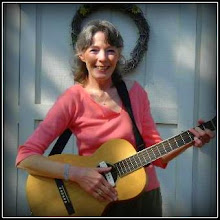Dance Even if Nobody Is Watching
Dance even if Nobody is Watching
New York Times article by Tara Parker-Pope on Health
July 10, 2008, 1:33 pm
I am late to the Matt Harding fan club, but like four million other viewers before me, I can’t stop watching this man dance.
Mr. Harding is a 31-year-old YouTube sensation featured in The Times this week for an uplifting video that shows him dancing a sort of a jig, described by my colleague Charles McGrath as "an arm-swinging, knee-pumping step that could charitably be called goofy." Mr. Harding dances alone, and he dances with lemurs, underwater and with children and crowds at various locations around the world.
While Mr. Harding probably isn’t the most graceful dancer you’ve ever seen, his video is a happy reminder that the benefits of dancing aren’t limited to physical exercise. A telling 2003 New England Journal of Medicine report showed a lower risk for dementia among people over 75 who regularly danced during leisure time. But what was so surprising about the report is that other types of physical exercise didn’t affect dementia risk — dancing was the only physical activity that made a difference.
Other studies have shown music plays an important role in depression. Dance therapy has been used to relieve anxiety about taking tests, and researchers are studying the tango to help patients with Parkinson’s. Dance therapy has been shown to improve the quality of life for breast cancer patients as well.
In addition to taking you on a gorgeous tour of some exotic and not-so-exotic locales, Mr. Harding’s video will leave you envious of his lightness of spirit. And it might even make you want to dance. To learn more about Mr. Harding, read the full story here.
New York Times article by Tara Parker-Pope on Health
July 10, 2008, 1:33 pm
I am late to the Matt Harding fan club, but like four million other viewers before me, I can’t stop watching this man dance.
Mr. Harding is a 31-year-old YouTube sensation featured in The Times this week for an uplifting video that shows him dancing a sort of a jig, described by my colleague Charles McGrath as "an arm-swinging, knee-pumping step that could charitably be called goofy." Mr. Harding dances alone, and he dances with lemurs, underwater and with children and crowds at various locations around the world.
While Mr. Harding probably isn’t the most graceful dancer you’ve ever seen, his video is a happy reminder that the benefits of dancing aren’t limited to physical exercise. A telling 2003 New England Journal of Medicine report showed a lower risk for dementia among people over 75 who regularly danced during leisure time. But what was so surprising about the report is that other types of physical exercise didn’t affect dementia risk — dancing was the only physical activity that made a difference.
Other studies have shown music plays an important role in depression. Dance therapy has been used to relieve anxiety about taking tests, and researchers are studying the tango to help patients with Parkinson’s. Dance therapy has been shown to improve the quality of life for breast cancer patients as well.
In addition to taking you on a gorgeous tour of some exotic and not-so-exotic locales, Mr. Harding’s video will leave you envious of his lightness of spirit. And it might even make you want to dance. To learn more about Mr. Harding, read the full story here.
Man's Closest Relatives Endangered
.jpg) photo from Conservation International
photo from Conservation InternationalPrimates on a Slippery Slope
August 5, 2008 article (abbreviated)
By Lisa Bowen
Deforestation, Hunting Plague Humans' Closest Relatives
Not too many conservationists can claim being threatened by a drunk policeman armed with a machine gun as a work experience. For primatologist Ben Rawson, little in his life – and that of his colleagues – is ordinary.
Rawson, 36, is among dozens of scientists on several continents who provided data for the first comprehensive review in five years of the world’s 634 kinds of primates. The results are staggering: almost 50 percent of all monkeys, lemurs, apes and other primates are in danger of becoming extinct.
Field scientists who gather such data know how tough this kind of work can be. Rawson recalls his brush with a policeman involved in the illegal wildlife trade in Cambodia: "I was in the local village at night looking for guides to take to the field the next day," he says. "A guy rolled up on his motorbike and confronted us on the street. He started waving his machine gun around, with special emphasis on me."
In Southeast Asia, many ethnic groups have a culture of hunting wildlife. According to Rawson, this hadn’t been a problem until the proliferation of guns in the region from various conflicts. Today, hunting is a serious threat to many species.
In Southeast Asia, many ethnic groups have a culture of hunting wildlife. According to Rawson, this hadn’t been a problem until the proliferation of guns in the region from various conflicts. Today, hunting is a serious threat to many species.
Habitat destruction is another direct cause for loss of primates worldwide, particularly from burning and clearing tropical forests. Not only does this destroy primate habitat, it also emits 20 percent of global greenhouse gases fueling climate change. Rawson sees climate change as an indirect, yet genuine threat to primates. He cites a recent report that predicts a one-meter sea level rise that would affect six million people, mostly in Vietnam’s Mekong Delta. "Massive numbers of people will be migrating into forested areas further north, and clearing those forests for agriculture," he points out.
Working for the past six years in Cambodia and Vietnam, where approximately 90 percent of the primates are at risk of extinction, Rawson has witnessed the crisis unfold. "Pretty much every time you go to the field you can see the problem," he says. "You see it with the creeping clearance of forests for agriculture. You see it in the dismembered remains of wildlife in the markets."
Despite the challenges, Rawson is cautiously optimistic. "The discovery of a new population, the protection of a key area; these are the things that give you hope," he explains. "However, realistically, all species of primates in Cambodia and Vietnam are on a slippery slope with populations still declining, often at drastic rates." ......
Working for the past six years in Cambodia and Vietnam, where approximately 90 percent of the primates are at risk of extinction, Rawson has witnessed the crisis unfold. "Pretty much every time you go to the field you can see the problem," he says. "You see it with the creeping clearance of forests for agriculture. You see it in the dismembered remains of wildlife in the markets."
Despite the challenges, Rawson is cautiously optimistic. "The discovery of a new population, the protection of a key area; these are the things that give you hope," he explains. "However, realistically, all species of primates in Cambodia and Vietnam are on a slippery slope with populations still declining, often at drastic rates." ......
"We all need to understand how our behavior impacts the world around us," Rawson says. Being a smart consumer can have a direct effect. For example, when you buy timber products such as outdoor furniture, be sure they are certified as legally harvested. That will reduce the amount of illegally harvested timber, which means a reduction in habitat loss for primates."
Learn more at Conservation International http://www.conservationinternational.org/
Slow Food USA
.jpg)
photos from: Slow Food USA
Live the Slow Life
Living the slow life with food as the focus is as rewarding as it is easy, and it can be done daily by each one of us. Ultimately, it is about pleasure and taste, knowledge and choice. Once we begin to take an interest in the enjoyment of food, and in finding out where our food comes from, we can begin to see the effects of these choices. When we shorten the distance—both literal and figurative—that our food travels to get to us, we are participating in the Slow Food movement. Slow Food is about coming together as a food community—connecting producers and co-producers, coming together on the farm, in the market, and at the table—to create and enjoy food that is good, clean and fair.
Slow Food is also simply about taking the time to slow down and to enjoy life with family and friends. Every day can be enriched by doing something slow - making pasta from scratch one night, seductively squeezing your own orange juice from the fresh fruit, lingering over a glass of wine and a slice of cheese - even deciding to eat lunch sitting down instead of standing up. For example, here in the Slow Food USA office, we take a moment to eat lunch together every day.
Living the slow life with food as the focus is as rewarding as it is easy, and it can be done daily by each one of us. Ultimately, it is about pleasure and taste, knowledge and choice. Once we begin to take an interest in the enjoyment of food, and in finding out where our food comes from, we can begin to see the effects of these choices. When we shorten the distance—both literal and figurative—that our food travels to get to us, we are participating in the Slow Food movement. Slow Food is about coming together as a food community—connecting producers and co-producers, coming together on the farm, in the market, and at the table—to create and enjoy food that is good, clean and fair.
Slow Food is also simply about taking the time to slow down and to enjoy life with family and friends. Every day can be enriched by doing something slow - making pasta from scratch one night, seductively squeezing your own orange juice from the fresh fruit, lingering over a glass of wine and a slice of cheese - even deciding to eat lunch sitting down instead of standing up. For example, here in the Slow Food USA office, we take a moment to eat lunch together every day.
from Slow Food USA http://www.slowfoodusa.org/change/index.html
Subscribe to:
Posts (Atom)
.jpg)



